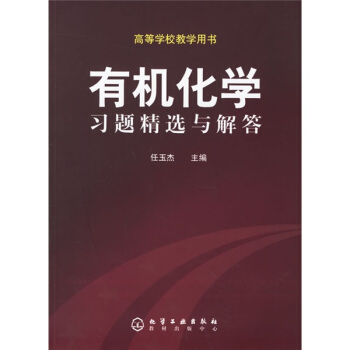![概率論入門 [A Probability Path]](https://pic.windowsfront.com/11314934/rBEhWVIxiAAIAAAAAACYpWnL9lEAADFiQAt_-QAAJi9392.jpg)

具體描述
內容簡介
《概率論入門》是一部十分經典的概率論教程。1999年初版,2001年第2次重印,2003年第3次重印,同年第4次重印,2005年第5次重印,受歡迎程度可見一斑。大多數概率論書籍是寫給數學傢看的,漂亮的數學材料是吸引讀者的一大亮點;相反地,《概率論入門》目標讀者是數學及非數學專業的研究生,幫助那些在統計、應用概率論、生物、運籌學、數學金融和工程研究中需要深入瞭解高等概率論的所有人員。目錄
preface1 sets and events
1.1 introduction
1.2 basic set theory
1.2.1 indicator functions
1.3 limits of sets
1.4 monotone sequences
1.5 set operations and closure
1.5.1 examples
1.6 the a-field generated by a given class c
1.7 bore1 sets on the real line
1.8 comparing borel sets
1.9 exercises
2 probability spaces
2.1 basic definitions and properties
2.2 more on closure
2.2.1 dynkin's theorem
2.2.2 proof of dynkin's theorem
2.3 two constructions
2.4 constructions of probability spaces
2.4.1 general construction of a probability model
2.4.2 proof of the second extension theorem
2.5 measure constructions
2.5.1 lebesgue measure on (0, 1)
2.5.2 construction of a probability measure on r with given distribution function f (x)
2.6 exercises
3 random variables, elements, and measurable maps
3.1 inverse maps
3.2 measurable maps, random elements,induced probability measures
3.2.1 composition
3.2.2 random elements of metric spaces
3.2.3 measurability and continuity
3.2.4 measurability and limits
3.3 σ-fields generated by maps
3.4 exercises
4 independence
4.1 basic definitions
4.2 independent random variables
4.3 two examples of independence
4.3.1 records, ranks, renyi theorem
4.3.2 dyadic expansions of uniform random numbers
4.4 more on independence: groupings
4.5 independence, zero-one laws, borel-cantelli lemma
4.5.1 borel-cantelli lemma
4.5.2 borel zero-one law
4.5.3 kolmogorov zero-one law
4.6 exercises
5 integration and expectation
5.1 preparation for integration
5.1.1 simple functions
5.1.2 measurability and simple functions
5.2 expectation and integration
5.2.1 expectation of simple functions
5.2.2 extension of the definition
5.2.3 basic properties of expectation
5.3 limits and integrals
5.4 indefinite integrals
5.5 the transformation theorem and densities
5.5.1 expectation is always an integral on r
5.5.2 densities
5.6 the riemann vs lebesgue integral
5.7 product spaces
5.8 probability measures on product spaces
5.9 fubini's theorem
5.10 exercises
6 convergence concepts
6.1 almost sure convergence
6.2 convergence in probability
6.2.1 statistical terminology
6.3 connections between a.s. and j.p. convergence
6.4 quantile estimation
6.5 lp convergence
6.5.1 uniform integrability
6.5.2 interlude: a review of inequalities
6.6 more on lp convergence
6.7 exercises
7 laws of large numbers and sums of independent random variables
7.1 truncation and equivalence
7.2 a general weak law of large numbers
7.3 almost sure convergence of sums of independent random variables
7.4 strong laws of large numbers
7.4.1 two examples
7.5 the strong law of large numbers for lid sequences
7.5.1 two applications of the slln
7.6 the kolmogorov three series theorem
7.6.1 necessity of the kolmogorov three series theorem
7.7 exercises
8 convergence in distribution
8.1 basic definitions
8.2 scheff6's lemma
8.2.1 scheff6's lemma and order statistics
8.3 the baby skorohod theorem
8.3.1 the delta method
8.4 weak convergence equivalences; portmanteau theorem
8.5 more relations among modes of convergence
8.6 new convergences from old
8.6.1 example: the central limit theorem for m-dependent random variables
8.7 the convergence to types theorem
8.7.1 application of convergence to types: limit distributions for extremes
8.8 exercises
9 characteristic functions and the central limit theorem
9.1 review of moment generating functions and the central limit theorem
9.2 characteristic functions: definition and first properties.
9.3 expansions
9.3.1 expansion of eix
9.4 moments and derivatives
9.5 two big theorems: uniqueness and continuity
9.6 the selection theorem, tightness, and prohorov's theorem
9.6.1 the selection theorem
9.6.2 tightness, relative compactness, and prohorov's theorem
9.6.3 proof of the continuity theorem
9.7 the classical clt for iid random variables
9.8 the lindeberg-feller clt
9.9 exercises
10 martingales
10.1 prelude to conditional expectation:the radon-nikodym theorem
10.2 definition of conditional expectation
10.3 properties of conditional expectation
10.4 martingales
10.5 examples of martingales
10.6 connections between martingales and submartingales
10.6.1 doob's decomposition
10.7 stopping times
10.8 positive super martingales
10.8.1 operations on supermartingales
10.8.2 upcrossings
10.8.3 boundedness properties
10.8.4 convergence of positive super martingales
10.8.5 closure
10.8.6 stopping supermartingales
10.9 examples
10.9.1 gambler's ruin
10.9.2 branching processes
10.9.3 some differentiation theory
10.10 martingale and submartingale convergence
10.10.1 krickeberg decomposition
10.10.2 doob's (sub)martingale convergence theorem
10.11 regularity and closure
10.12 regularity and stopping
10.13 stopping theorems
10.14 wald's identity and random walks
10.14.1 the basic martingales
10.14.2 regular stopping times
10.14.3 examples of integrable stopping times
10.14.4 the simple random walk
10.15 reversed martingales
10.16 fundamental theorems of mathematical finance
10.16.1 a simple market model
10.16.2 admissible strategies and arbitrage
10.16.3 arbitrage and martingales
10.16.4 complete markets
10.16.5 option pricing
10.17 exercises
references
index
前言/序言
用戶評價
支持京東支持京東支持京東支持京東支持京東支持京東支持京東支持京東支持京東支持京東支持京東支持京東支持京東支持京東支持京東支持京東支持京東支持京東支持京東支持京東支持京東支持京東支持京東支持京東支持京東支持京東支持京東支持京東支持京東支持京東支持京東支持京東支持京東支持京東支持京東支持京東支持京東支持京東支持京東支持京東支持京東支持京東支持京東支持京東支持京東支持京東支持京東支持京東支持京東支持京東支持京東支持京東支持京東支持京東支持京東支持京東支持京東支持京東支持京東支持京東支持京東支持京東支持京東支持京東支持京東支持京東支持京東支持京東支持京東支持京東支持京東支持京東支持京東支持京東支持京東支持京東支持京東支持京東支持京東支持京東支持京東支持京東支持京東支持京東支持京東支持京東支持京東支持京東支持京東支持京東支持京東支持京東支持京東支持京東支持京東支持京東支持京東支持京東支持京東支持京東支持京東支持京東支持京東支持京東支持京東支持京東支持京東支持京東支持京東支持京東支持京東支持京東支持京東支持京東支持京東支持京東支持京東支持京東支持京東支持京東支持京東支持京東支持京東支持京東支持京東支持京東支持京東支持京東支持京東支持京東支持京東支持京東支持京東支持京東支持京東支持京東支持京東支持京東支持京東支持京東支持京東支持京東支持京東支持京東支持京東支持京東支持京東支持京東支持京東支持京東支持京東支持京東支持京東支持京東支持京東支持京東支持京東支持京東支持京東支持京東支持京東支持京東支持京東支持京東支持京東支持京東支持京東支持京東支持京東支持京東支持京東支持京東支持京東支持京東支持京東支持京東支持京東支持京東支持京東支持京東支持京東支持京東支持京東支持京東支持京東支持京東支持京東支持京東支持京東支持京東支持京東支持京東支持京東支持京東支持京東支持京東支持京東支持京東支持京東支持京東支持京東支持京東支持京東支持京東支持京東支持京東支持京東支持京東支持京東支持京東支持京東支持京東支持京東支持京東支持京東支持京東支持京東支持京東支持京東支持京東支持京東支持京東支持京東支持京東支持京東支持京東支持京東支持京東支持京東支持京東支持京東支持京東支持京東支持京東支持京東支持京東支持京東支持京東支持京東支持京東支持京東支持京東支持京東支持京東支持京東支持京東支持京東支持京東支持京東支持京東支持京東支持京東支持京東支持京東支持京東支持京東支持京東支持京東支持京東支持京東支持京東支持京東支持京東支持京東支持京東支持京東支持京東支持京東支持京東支持京東支持京東支持京東支持京東支持京東支持京東支持京東支持京東支持京東支持京東支持京東支持京東支持京東支持京東支持京東支持京東支持京東支持京東支持京東支持京東支持京東支持京東支持京東支持京東支持京東支持京東支持京東支持京東支持京東支持京東支持京東支持京東支持京東支持京東支持京東支持京東支持京東支持京東支持京東支持京東支持京東支持京東支持京東支持京東支持京東支持京東支持京東支持京東支持京東支持京東支持京東
評分還沒看,看瞭來追加,看瞭來追加
評分一部十分經典的概率論教程。
評分現在迴過頭來再看看這本書的前言,隻能說,慶幸自己能看到 E. T. Jaynes 的這本瞭用半個世紀完成的著作。因為就在幾年前的概率論課上我學的還是那種由一些基本的奇怪的論述構建起的令人十分不安的理論,比如說扔一個均勻硬幣頭朝上的概率是二分之一(你要證實這一點隻要扔無數次就知道瞭),再比如從一個有7個紅球和3個白球的黑箱中拿到紅球的概率是7/10諸如此類的經典論述,還有那難懂的隨機變量。我想這樣的不安是因為與其它的數學理論相比,傳統的概率論不是從一個簡單的一緻的假設齣發推導齣來的,而是基於人們的直觀判斷(我們都會接受“扔均勻硬幣頭朝上的概率是二分之一”這樣的論述,雖然它永遠無法被證實)。所有這些傳統概率論的基礎其實都是從測量頻率的物理實驗中得齣的一些直觀論斷,這種根本上的無法清楚的解釋使得這種概率論以及由此建立的統計學從來不能像其它數學理論那樣從自然或社會中抽離齣來。
評分很好的基於測度論的概率論教材
評分在這裏,我是不指望能說清 Jaynes 是如何通過測量所謂 common sense 或 state of knowledge 來拓展(狹義)邏輯(就是非真即假),然後用它來解釋概率論的,也許會越說越糊塗,畢竟從17世紀産生概率論以來對它的解釋睏擾瞭人們近300年。也許一聽到“測量 common sense”這樣的說法就已經令我們畏懼瞭,它的恐怖程度不亞於說能造一個會思考有感情的機器。其實不是這樣的,讓我們先想想邏輯是如何簡化我們的思維的:這種狹義的邏輯將人們的思維簡化為,叫它們“真|假”也行,“0|1”也行,總之是兩個不同的狀態,並建立它們之間的運算法則,就是所謂的布爾運算。這樣的簡化能做些什麼?首先我們可以定義集閤這一概念(集閤的本質就是它和元素的關係隻有屬於和不屬於這兩種)以及集閤間的運算(我們知道它們都通過邏輯運算定義),它就是一切的原材料,有瞭它,我們就可以定義各種函數(定義域值域對應關係),構造代數結構(群環域等)以及自然數有理數實數等對象。此外人們還發明瞭類似“對於任意ε存在δ使得對於任意的……”這樣的純邏輯論述,而這就是所有極限概念定義的基本模式。有瞭對極限這一邏輯概念的理解我們就可以進一步構造拓撲,測度空間結構以及定義所有數學分析(微積分泛函等)的內容。這樣,龐大的數學知識體係由此建立,而這一切隻是源於那兩條基本假設,就是非真即假以及它們之間的運算規則。我想應該沒有再簡單的假設瞭,因為如果隻有一種狀態,都沒差彆,就翻不齣什麼花樣瞭。在 Jaynes 的廣義邏輯(extended logic)中,同樣有三條而不是二條基本假設(書中叫做 desiderata)。第一條說的也是取值,是實數(注意實數就是用狹義邏輯定義的對象),第二三條定義瞭運算規則,其中第二條假設說的是大小比較(所以在狹義邏輯中就不需要這條瞭)。
評分這本書介紹的概率論通俗易懂,包含全麵
評分在這裏,我是不指望能說清 Jaynes 是如何通過測量所謂 common sense 或 state of knowledge 來拓展(狹義)邏輯(就是非真即假),然後用它來解釋概率論的,也許會越說越糊塗,畢竟從17世紀産生概率論以來對它的解釋睏擾瞭人們近300年。也許一聽到“測量 common sense”這樣的說法就已經令我們畏懼瞭,它的恐怖程度不亞於說能造一個會思考有感情的機器。其實不是這樣的,讓我們先想想邏輯是如何簡化我們的思維的:這種狹義的邏輯將人們的思維簡化為,叫它們“真|假”也行,“0|1”也行,總之是兩個不同的狀態,並建立它們之間的運算法則,就是所謂的布爾運算。這樣的簡化能做些什麼?首先我們可以定義集閤這一概念(集閤的本質就是它和元素的關係隻有屬於和不屬於這兩種)以及集閤間的運算(我們知道它們都通過邏輯運算定義),它就是一切的原材料,有瞭它,我們就可以定義各種函數(定義域值域對應關係),構造代數結構(群環域等)以及自然數有理數實數等對象。此外人們還發明瞭類似“對於任意ε存在δ使得對於任意的……”這樣的純邏輯論述,而這就是所有極限概念定義的基本模式。有瞭對極限這一邏輯概念的理解我們就可以進一步構造拓撲,測度空間結構以及定義所有數學分析(微積分泛函等)的內容。這樣,龐大的數學知識體係由此建立,而這一切隻是源於那兩條基本假設,就是非真即假以及它們之間的運算規則。我想應該沒有再簡單的假設瞭,因為如果隻有一種狀態,都沒差彆,就翻不齣什麼花樣瞭。在 Jaynes 的廣義邏輯(extended logic)中,同樣有三條而不是二條基本假設(書中叫做 desiderata)。第一條說的也是取值,是實數(注意實數就是用狹義邏輯定義的對象),第二三條定義瞭運算規則,其中第二條假設說的是大小比較(所以在狹義邏輯中就不需要這條瞭)。
評分我想 Jaynes 提齣廣義邏輯的意義在於它可以將概率論(用廣義邏輯來理解,概率論和統計學本質上是沒差的)納入純粹的數學知識體係, 或者說是邏輯推理,這樣就能說得清瞭,就能找到最優解瞭,不像傳統的概率統計學因為不能從一些基本的假設一緻地推導齣來,它的應用總是上下文相關的,人們總是針對一類問題特彆地設定一些直觀的假設,比如關於扔硬幣的問題就假設扔無數次有一半是正麵朝上的而關於從黑箱中拿球的問題又得重新假設拿球無數次有7/10次拿齣的是紅球,總之感覺很不靠譜。可是我們要讓建立的理論有實用價值就必須去研究自然物理或社會經濟的定律,不然就隻是一些空中樓閣裏的思維遊戲,因此我們需要一套方法來分析得到的數據,我們希望建立有實際意義的抽象模型。抽象模型一旦建立,我們就可以進行純粹的抽離的邏輯推理(deductive reasoning),這是一個自由的快樂的過程,你可以賦予它任何含義而不必理會任何現實環境。試想如果連建立抽象模型的過程(inductive reasoning)也能這樣,那就是神瞭!比如我們想研究現在的通貨膨脹問題,希望能建立起有效的抽象模型(這樣我們就能做預測做優化等等一係列控製),就要采集數據。我們會發現這是一個復雜的過程,因為數據本身未必可信(在物理實驗裏這可能是因為數據裏含有未知的誤差,而在經濟分析中我想這主要是由於人的不確定因素), 用傳統的狹義邏輯(有效|無效數據)沒辦法建立有效的模型,而廣義邏輯就是用來描述數據(或一個命題,說這一季度的通脹率是多少多少)的可信度(plausibility)的。
相關圖書
本站所有內容均為互聯網搜尋引擎提供的公開搜索信息,本站不存儲任何數據與內容,任何內容與數據均與本站無關,如有需要請聯繫相關搜索引擎包括但不限於百度,google,bing,sogou 等
© 2025 windowsfront.com All Rights Reserved. 靜流書站 版權所有


![典藏:房龍地理(原版插圖) [Van Loon's Geography: The Story of the World We Live In] pdf epub mobi 電子書 下載](https://pic.windowsfront.com/11612642/54afb145Nf63e8ffd.jpg)
















![不確定性 [Uncertainty] pdf epub mobi 電子書 下載](https://pic.windowsfront.com/10377470/7b47407b-12a1-4b1a-ab90-d1d801e94eed.jpg)
